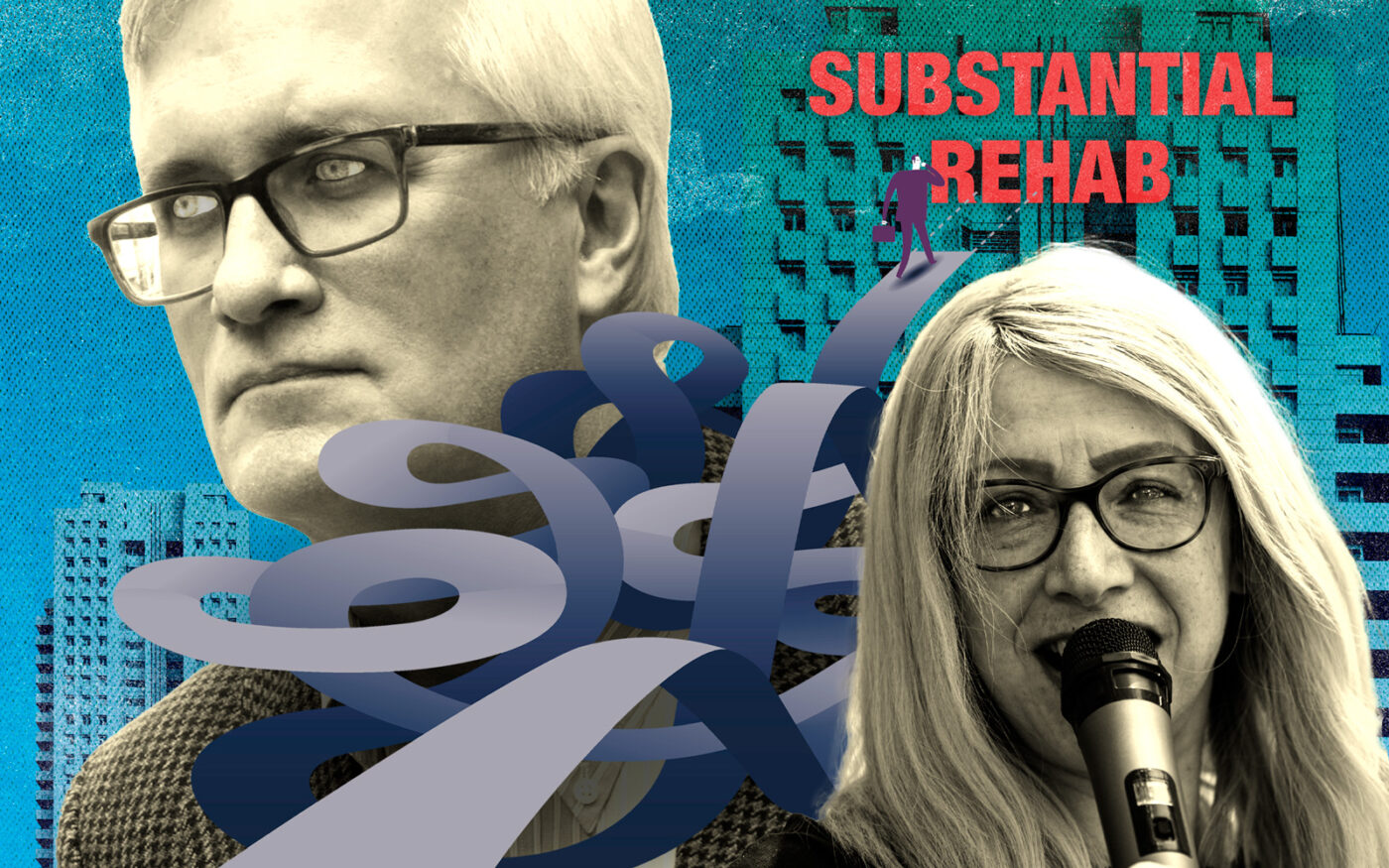 Legislators approve controversial rent-overcharge bills
Legislators approve controversial rent-overcharge bills
Bill guts one of last remaining rent regulation escape routes
Measure takes aim at substantial rehabs

Changes to New York’s rent law in 2019 closed off most avenues for landlords to deregulate their buildings. Now, a pair of bills awaiting the governor’s pen seek to hamstring owners’ remaining options to escape rent stabilization.
The bills have garnered a lot of attention for how they will affect rent overcharge cases, in particular the proposed changes to fraud claims, as well as the new rules around setting rents for vacant, rent-stabilized units that have been combined. The new rules for so-called “Frankenstein” units cap initial rents on combined units, and prevent the apartments from being deregulated.
But a less discussed aspect of one of the measures is its changes to buildings exempt from rent regulation through “substantial rehabilitation.”
Landlords can deregulate units if they gut renovate “substandard or seriously deteriorated” buildings, replacing at least 75 percent of the building-wide and individual apartment systems.
Last month, the Senate and Assembly approved bills that make several major changes to substantial-rehabilitation rules. One is that all buildings that have undergone substantial rehabilitation must submit applications to the state’s housing regulator within six months of the bill passing.
This means buildings that have been exempt for decades — many of which have traded hands multiple times — would need to apply for an exemption to rent regulation. Newly rehabilitated buildings would need to submit an application within one year of completing work.
“We’re probably talking about hundreds of buildings, going back 40 years,” said real estate attorney Sherwin Belkin.
Last year, 322 apartments were deregulated through substantial rehabilitation, according to the Rent Guidelines Board. That was more than double the number seen in 2021, and the highest since 2012, when 481 units were taken out of rent regulation. Since 1994, 10,602 units were deregulated through these building overhauls, a blip compared to the 170,386 lost through vacancy decontrol, which is no longer permitted. These numbers, however, do not include properties where every unit was deregulated because they would not be registered with HCR.
Owners can ask the state Division of Homes and Community Renewal to issue an opinion before they begin such a project to ensure the agency believes the work qualifies for an exemption, lest they be challenged later in court. They can also ask the agency to issue an order approving the exemption after the work is completed. Neither are currently required.
Edward Josephson, a supervising attorney at Legal Aid, said the measure is a “clean-up bill,” that could provide more certainty to landlords and more consistency in terms of the projects approved. Rather than relying on dozens of judges to issue potentially conflicting opinions about what qualifies as a substantial rehabilitation, HCR will be making such determinations. Currently, a building owner can perform work, deregulate apartments and then be challenged by a tenant 30 years later in court. Or a property can trade hands, and the new owner can try to prove that the building shouldn’t have been regulated for the past 20 years.
“That’s a little bit crazy,” Josephson said. For landlords who do not have easy access to decades-old documentation and already faced the possibility of a tenant challenge, the bill means they will need to confront a possible rejection of their exemption sooner rather than later — within six months, to be exact. And for newer rehabs, the measure should create less uncertainty for landlords, according to Josephson.
The state’s housing regulator proposed guidance last year that would have limited what is considered proof that a building was seriously deteriorated and in need of major rehabilitation. As things stand, the state considers a building that was 80 percent vacant to qualify. But the 2022 proposed guidance eliminated that provision and required the full demolition of a building — not just a gut renovation — to reset rents to market-rate. HCR said the guidance, which did not move forward, is still under consideration.
Rosenberg & Estis’ Deborah Riegel said the bill could freeze nonpayment of rent cases in housing court and scare lenders until HCR had signed off on a building’s renovation.
“It is a pretty big sea change,” she said. “Practically speaking, it will have a huge impact on the market.”
Read more
 Legislators approve controversial rent-overcharge bills
Legislators approve controversial rent-overcharge bills
 Landlords in panic about last-minute Albany bill
Landlords in panic about last-minute Albany bill
 The housing session that wasn’t
The housing session that wasn’t




